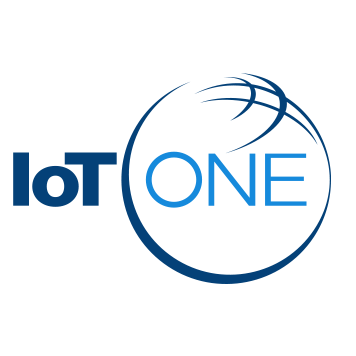Software AG
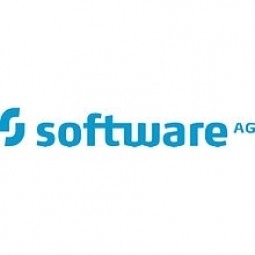
Overview
|
HQ Location
Germany
|
Year Founded
1970
|
Company Type
Public
|
Revenue
$1-10b
|
|
Employees
1,001 - 10,000
|
Website
|
Stock Ticker
OTCMKTS: STWRY
|
Twitter Handle
|
Company Description
Software AG's products help companies combine existing systems On-Premise and in the cloud into a single platform to optimize and digitize their businesses. The combination of process management, data integration and real-time analytics in one Digital Business Platform enables customers to drive operational efficiency, modernize their systems and optimize processes for smarter decision-making.
Software AG specializes in business process management software, including XML-based database applications and enterprise software, transactional databases, and applications development. The company's customers use its products to link and manage a wide variety of IT assets, including business software, servers, databases, mobile devices, and PCs. Services include consulting, maintenance, and training.
Software AG specializes in business process management software, including XML-based database applications and enterprise software, transactional databases, and applications development. The company's customers use its products to link and manage a wide variety of IT assets, including business software, servers, databases, mobile devices, and PCs. Services include consulting, maintenance, and training.
IoT Solutions
All the data in the world is of little value if we don’t know what questions we are trying to answer or what opportunities we are trying to seize. The magnificence of the Internet of Things (IoT) lies not in its sheer volume of data and connections but in the timely access to the right data to accomplish goals more reliably, effectively and efficiently.
Software AG’s Digital Business Platform is an integrated set of technologies and tools to manage the Digital Transformation and to implement new business designs. Digital Business Platform can handle any process or data that will be needed in the future digitalization, in order to help customers face the challenges.
Software AG’s Digital Business Platform is an integrated set of technologies and tools to manage the Digital Transformation and to implement new business designs. Digital Business Platform can handle any process or data that will be needed in the future digitalization, in order to help customers face the challenges.
Key Customers
DigitalGlobe, Kiabi, Logrand Group
IoT Snapshot
Software AG is a provider of Industrial IoT infrastructure as a service (iaas), platform as a service (paas), application infrastructure and middleware, analytics and modeling, networks and connectivity, automation and control, and functional applications technologies, and also active in the equipment and machinery, food and beverage, telecommunications, transportation, and utilities industries.
Technologies
Use Cases
Functional Areas
Industries
Services
Technology Stack
Software AG’s Technology Stack maps Software AG’s participation in the infrastructure as a service (iaas), platform as a service (paas), application infrastructure and middleware, analytics and modeling, networks and connectivity, automation and control, and functional applications IoT Technology stack.
-
Devices Layer
-
Edge Layer
-
Cloud Layer
-
Application Layer
-
Supporting Technologies
Technological Capability:
None
Minor
Moderate
Strong

Supplier missing?
Start adding your own!
Register with your work email and create a new supplier profile for your business.
Case Studies.

Case Study
Coca-Cola Refreshments, U.S.
Coca-Cola Refreshments owns and manages Coca-Cola branded refrigerators in retail establishments. Legacy systems were used to locate equipment information by logging onto multiple servers which took up to 8 hours to update information on 30-40 units. The company had no overall visibility into equipment status or maintenance history.

Case Study
PREDICTIVE MAINTENANCE
Manufacturers rightly focus on improving profit margins and growing revenue. Attracting new customers, selling more products and lean practices can help. However, as equipment sophistication increases, so does the ability to monitor equipment. Manufacturers can now develop revenue from maintenance services. Preventive maintenance has its advantages but to really drive uptime and maintain service levels, predictive maintenance is needed. Seamless IoT and machine sensor data integration is critical as well as a low-latency messaging backbone for scalable, fast and reliable transport. Delivering potentially large quantities of data at sub-second speeds is key to downstream activities. webMethods Integration, featuring Universal Messaging, addresses this need with an enterprise-grade service bus for connectivity, messaging, transformation and security of machine data for advanced real-time analytics.

Case Study
Software AG - Market Operator Enhances Australia Energy Future
AEMO needed to modernize of the Gas FRC Hub a B2B platform for the gas retail markets throughout Australia and provide a reliable B2B platform that could scale to support the adoption of B2B procedures in New South Wales (NSW).

Case Study
Setting a New Pace for Increased Competitive Advantage
Fujitsu needed a solution that would provide greater flexibility for user interfaces, facilitate improvements in its 24/7 support, enable faster on-boarding of customers and increase cost efficiencies. Fujitsu also needed continuous availability throughout the transition process due to demanding Service Level Agreements (SLAs) and high penalties.

Case Study
Scalable IoT Empowering GreenFlex's Sustainable Growth
GreenFlex, a company that supports sustainable development, decarbonization, and energy efficiency, faced several challenges in its quest to expand its business. The company needed to deploy a robust and sustainable IoT technology to support its growth. It was crucial for them to monitor and control devices at customer sites in a safe and reliable manner. They also needed to integrate devices across a range of communication protocols and gather and act on data to meet efficiency targets. GreenFlex had previously built IoT capabilities into its digital platform, GreenFlexIQ, to monitor and manage customer sites remotely. However, they soon realized that they needed a new platform to support their ambitions. They needed a platform that could scale to connect more devices for production management and make it easier for the operations team to manage devices in the field.

Case Study
Accelerating Enterprise Digitalization: Deutsche Telekom’s Cloud of Things IoT Platform
Deutsche Telekom, a global leader in Machine-to-Machine (M2M) and Internet of Things (IoT) communications, was faced with the challenge of quickly establishing a presence in the fast-paced IoT market. The company needed to find a technology partner that could provide a fully rebrandable platform to launch a solution that could get customers up and running in minutes. Deutsche Telekom recognized that its enterprise customers, including Dürkopp Adler, Deutsche Afrika Linien, HUBTEX, and Definitiv, needed to transform their businesses to remain globally competitive and innovative. The company aimed to simplify IoT adoption and enable its enterprise customers to efficiently implement end-to-end IoT solutions. This would allow these businesses to increase end-customer service levels and customer satisfaction, lower operational costs, and transition from product-centric to service-centric companies.

Case Study
Optimizing Business Operations with IoT: A Compilation of Case Studies
The case study compilation presents a variety of challenges faced by different organizations across various sectors. Medical Industrie GmbH & Co. KG needed to optimize and streamline their B2B sales. Bank Sinarmas needed to comply with Indonesian Open-API Standards and exploit the ecosystem economy. MUDUM required a platform to harness the power of the API-driven ecosystem economy. OCP Group needed to standardize their APIs. Al Barid Bank was in the process of digital transformation. Marsa Maroc needed to digitalize its business workflows. PharmLog required an integration platform for seamless pharma logistics. Lufthansa Technik AG needed a B2B integration environment for standardized customer engagement. Socomec needed a hybrid integration tool to boost security and improve efficiency. Hellmann needed to integrate more than 750 application interfaces and over 500 customers.
Case Study
Dürr Group's Infrastructure Integration with webMethods: A Case Study
The Dürr Group, a leading mechanical and plant engineering firm, faced several challenges in aligning its IT with its company-wide OneDürrGroup strategy. The company's consistent expansion and diverse customer base resulted in a complex IT infrastructure, characterized by different integration solutions and a hybrid application landscape. The company aimed to implement its OneDürrGroup strategy across all locations and divisions, which naturally impacted its own IT. The diverse range of solutions—on-premises, Integration-Platform-as-a-Service (iPaaS) and Software-as-a-Service—meant more cost and effort and required more expertise in different technologies, as well as a mass of redundant interfaces. The company believed that an integrated architecture could achieve significant streamlining in the HR landscape alone.
Case Study
Staples Uses webMethods to Support Multi-Million Dollar Savings Initiative
Staples Inc., the world's largest supplier of office products, promises to make buying products easy, including making customer deliveries the very next day whenever required. When Staples experienced an increase in delivery volume, the company needed an integration solution that could be implemented rapidly and scaled easily. The company had recently acquired Corporate Express and was seeking ways to maximize synergy and reduce costs across the business. They identified an opportunity to integrate transportation networks for a potential multi-million-dollar cost savings. However, the supply chain platform they had selected couldn't scale to handle the massive transaction volume. Staples was committed to finding a solution that did not slow down integration efforts with Corporate Express.
Case Study
Digital Transformation of Microfinance: A Case Study of Bank Rakyat Indonesia
Bank Rakyat Indonesia (BRI), the largest national bank in Indonesia and the world's largest microfinance institution, faced several challenges in its quest to digitalize transactions and meet rapidly changing customer needs. The bank's complex architecture, which included over 200 different systems and multiple middleware platforms, made it difficult to integrate, operate, and monitor new applications. This complexity also hindered the bank's ability to quickly bring new services to market. Furthermore, BRI needed to reduce costs on smaller, shorter-term loans, a key component of its microfinance offerings. The bank's existing technology had limited capabilities and performance, and could not support its new digital banking initiative.

Case Study
Optimizing Business Operations with IoT: A Compilation of Case Studies
The case study compilation presents a variety of challenges faced by different organizations across various industries. Medical Industrie GmbH & Co. KG needed to optimize and streamline their B2B sales. Bank Sinarmas needed to comply with Indonesian Open-API Standards and exploit the opportunities of the ecosystem economy. MUDUM was looking to harness the power of the API-driven ecosystem economy. OCP Group needed to standardize their APIs. Al Barid Bank was undergoing a digital transformation and needed to strengthen its position as an inclusive bank. Marsa Maroc was looking to advance the digitalization of its business workflows. PharmLog needed an integration platform solution that improves their overall efficiency and creates maximum transparency. Lufthansa Technik AG needed a B2B integration environment that standardized customer engagement. Socomec needed to boost security, improve efficiency, and achieve total visibility over its business workflows. Hellmann needed to integrate more than 750 application interfaces and over 500 customers.
Case Study
On Track to Process Excellence: Business Process Management Implementation
Brenntag Europe, a world leader in international chemical distribution, was facing challenges due to its continuous growth. The growth had led to a highly disparate and inefficient IT environment. There was a lack of enterprise-wide process standardization and visibility. The company also needed to comply with Sarbanes-Oxley criteria and improve its quality management for ISO certification and audits. The company desired to implement a consistent operational foundation, built with standardized and modular processes, to facilitate simplified implementations and the optimization of existing applications.
Case Study
ATB Financial Improves Processes & Customer Satisfaction
ATB Financial, a financial institution and crown corporation, was facing challenges in its business lending origination process. The process was slow and inconsistent due to manual data entry and interpretation, which led to human errors and slowed down the process. The subjective interpretation of the approval criteria led to inconsistent outcomes and often resulted in rework. It could take up to three weeks for a single customer to be approved with an average process time of about 11 days. ATB aimed to accelerate the process of onboarding small business and agricultural customers to one day or less. They also wanted to increase visibility to monitor and optimize processes and leverage agile business rules to boost the approval rate.
Case Study
Apollo-Optik Sees Clear Benefits with SOA
Apollo-Optik, Germany's largest retail chain for optical products, was facing challenges in serving its customers with high-quality products and on-time delivery. The company's IT landscape was complex and consisted of several different back-end systems, leading to redundancy in data and functionality. For instance, retrieving all data on a customer required calling upon many relevant functions in different systems. This inefficiency prompted Apollo-Optik to transition to a more efficient Service-Oriented Architecture (SOA) and implement re-usable services across all systems. The company aimed to provide the highest level of quality in customized eyeglasses on time, every time, and needed a solution that could help achieve this goal.
Case Study
Webmethods Helps Australian Energy Market Operator Enhance Australia’s Energy Future
The Australian Energy Market Operator (AEMO) was faced with the challenge of offering a single technology platform for all gas market participants to easily transfer information and data in a seamless way for each gas market. It also wanted to more effectively promote greater industry collaboration and flexibility for how participants interacted across the platform. A key part of this challenge was the modernization of the Gas FRC Hub, a B2B platform for the gas retail markets throughout Australia. The hub infrastructure was also planned for use in the NSW/ACT gas retail market.
Case Study
Saudi Telecom Company‘S SOA Journey
STC, the major provider of telecommunication services in Saudi Arabia, was facing a rapidly changing business environment characterized by volatility and the need for new and innovative business models. Globalization was impacting the telecom industry as a whole and, in addition, technologies were converging, customers were becoming more highly educated and expressed demands that were both increasing in scope and diversity. Telecom companies, therefore, needed to invest in new and rapidly evolving technologies while at the same time deal with the commoditization of their products and services. Customer volatility and regulatory pressures were also compounding this competitive situation. Winning and retaining customers today is about service excellence and as prices point are lowered so are the entry points into these industries by competitors. To combat this, telecom enterprises are shifting their focus from growth to efficiency.
Case Study
Controlling In Market Communications
Piraeus Bank Group, one of the most dynamic financial organizations in Greece, was facing challenges due to its rapid international expansion. The bank needed a well-defined enterprise architecture at its headquarters that could be rolled out to its subsidiaries to streamline local operations based on the Piraeus Bank model. Additionally, the bank was experiencing a rate of growth that involved operational modifications on a daily basis, which needed to be efficiently maintained and distributed. The bank also aimed to create a strong, well-documented, comprehensive, and flexible enterprise architecture that would be valid for Piraeus Bank Greece but also applicable at the Group level. This would allow for efficient distribution of Group policies and operations and quick integration of newly acquired subsidiaries.
Case Study
The Central Bottling Company Group (Coca-Cola Israel): Innovation Award Winner
The Central Bottling Company (CBC) Group, which holds the Coca-Cola franchise for Israel, wanted to mobilize its retail portal as part of a broader initiative to speed up the ordering process. Smaller retailers were still placing orders with on-site sales people and through an online portal. By mobilizing the portal, the CBC Group aimed to create a convenient self-service channel for retailers. The Mobile Enterprise Application Platform (MEAP) needed to work with the largest variety of operating systems and offer superior time to market at minimal cost and with maximum internal support.
Case Study
Cargolux Takes Off into A Successful Future
Cargolux Airlines S.A. was in a strong market position with impressive sales and constant profit figures when the top management decided to run a “health check” on the company’s processes. Management perceived inefficiencies with the organization and IT spending was not optimized to support it. “In addition, management felt that internal groups sometimes had different versions of the truth and decision makers were having trouble gathering the information they needed in a timely manner. Finally, over time each business unit had started to run their own systems and created databases that sometimes competed with each other. The risk of duplicated and unclear ownership of tasks had become too high.” Cargolux started to look for a way to streamline its processes and provide the foundation for creating a service-oriented systems architecture.
Case Study
Performance Tools Put Auto Manufacturer on the Road to More Efficient Operations
Nissan, one of the world's largest automobile manufacturers, was facing the challenge of fulfilling its strategy of producing and delivering made-to-order vehicles. The company had been relying on Software AG's Adabas and Natural for database management and application development since 1985. However, with the increasing customer demand for customized cars, Nissan recognized the need to improve database performance and application efficiency. The challenges of an overburdened database were inevitable as database backups were interfering with employee productivity and a high number of data files running in parallel on a critical path often created a bottleneck.
Case Study
Advanced Analytics for the Factory of the Future: A Case Study on Ashland Manufacturing
Ashland Manufacturing, a $5 billion US-based provider of specialty chemical solutions, was facing a series of challenges. The company was shifting its focus from construction materials to pharmaceuticals, a transition that brought about new challenges. This shift required higher added value, lower product throughput, and more control over production processes. The company was also dealing with seemingly 'unsolvable' production issues and a need for operational efficiency to boost quality and profitability. There was also pressure to increase Good Manufacturing Practice (GMP) production throughput. Furthermore, the company had to navigate the new territory of strict GMP standards relating to pharmaceutical product quality.
Case Study
Australian Unity: Enhancing Customer Wellbeing through Open Integration and API Management
Australian Unity, a leading provider of health, wealth, and care products and services, faced several challenges. The company had a directive to migrate critical on-premises applications to the cloud. They also needed a single source of truth across their complex, diverse business portfolio. The company desired to automate their complex membership rules process and felt the pressure to enable secure file transfer across the business. The company's diverse range of products and services necessitated an investment in IT to deliver what matters to its customers and members. Australian Unity needed a solution that could unlock data held in silos across numerous legacy systems and connect it to release its true value.
Case Study
EFG Hermes: Achieving Digital Agility through API-led Integration
EFG Hermes Holding, a universal bank based in Cairo, was facing several challenges as it sought to expand into the non-bank financial product market. The company was developing a new consumer financing platform that required greater digital agility. They needed to provide a connected customer experience, modernize their legacy integration, and minimize disruptive back-end changes. The company's novel BNPL platform, valU, had grown in popularity since its launch in 2017. However, as the suite of applications expanded, the IT systems became less agile due to rigid point-to-point connections. This lack of agility led to service interruptions when replacing applications and delays in updates to the valU mobile app. To ensure an exceptional customer experience, EFG Hermes Holding recognized the need for a more agile, secure, and easy-to-maintain services architecture.
Case Study
Schwering & Hasse Ensures Quality Manufacturing at High Speed Using Apama
Schwering & Hasse (S&H), a Germany-based company, manufactures a large volume of copper magnet wire, a critical component of numerous electrical products. The manufacturing process requires minute tolerances for the insulation, with even a tiny deviation from the specification rendering the wire useless. S&H's mission is to manufacture as much wire as possible with as few errors as possible. However, the company faced challenges in maintaining high quality standards due to rapidly changing customer demands and product specifications. The existing information systems were not equipped to create a factory that was truly “transparent” to both line workers and managers. The company needed a system that could provide immediate and accurate visibility into multiple production quality factors in real time.
Case Study
Schwering & Hasse Ensures Quality Manufacturing at High Speed Using Apama
Schwering & Hasse (S&H), a Germany-based company, manufactures a massive volume of copper magnet wire, with 400 production lines producing 140,000 kilometers of wire per day in a 24/7 operation. The wire, which is coated with a thin layer of insulation, is a critical component of numerous electrical products, such as transformers and motors. The tolerances required for the insulation are minute, with even a tiny deviation from the specification rendering the wire useless. S&H's mission is to manufacture as much wire as possible with as few errors as possible. However, the company faced challenges in maintaining high quality standards due to rapidly changing customer demands and product specifications. The company's existing information systems were not equipped to create a factory that was truly “transparent” to both line workers and managers, and did not provide detailed, real-time information about every phase in the production process.
Case Study
Colruyt Improves Supplier Communications, Order-to-Cash Process
The Colruyt Group, a major player in Belgium's retail network, was struggling with inefficient communications and order management due to the use of manual processes and homegrown solutions. The company, which operates a vast network of retailers, distributors, and suppliers, found that these methods no longer met its need for efficient communications and order management. The existing process used manual processes for orders, invoicing, and change orders, resulting in inaccurate orders and drawn-out order-to-cash timeframes.
Case Study
Efficient Mainframe Integration – The Backbone for Multi- Channeling and New Distribution Concepts in the Fund Business
All direct trading operations at DWS are conducted via its IKS investment account service. As Europe’s largest supplier of public funds, DWS has been handling all necessary customer and account management since the late 1980s with an Adabas- and Natural-based mainframe application. In the late 1990s, DWS put its entire It landscape, including this essential application, to the test. the need for action arose in particular because of insufficient integration of the different It systems. A need for modernization was quickly identified in the IKS department, DWS’s internal distribution channel for the funds trade. Over the years, a number of isolated solutions with only limited interaction capabilities had emerged. The mainframe application was developed with Adabas and Natural in the late 1980s for central customer and account management. It was distressing that marketing and distribution applications, such as call center and document management, could only access the mainframe application via workaround solutions or, in some cases, could not access it at all.
Case Study
Bossini Advances Its Supply Chain Strategy with the Webmethods ESB
To keep ahead in the fast-moving fashion industry, Bossini wanted to have better visibility into its business and operational processes by synchronizing real-time data across multiple orders, shipments and stock-keeping units (SKUs). However, the data resided in a number of systems, from point-of-sale (POS) solutions to Bossini’s warehouse management inventory. In order to achieve its goals, Bossini had to integrate a series of platforms including the old and new versions of its Oracle application and the company’s legacy platform. During the transition from legacy system to SOA, the company’s different platforms had to be integrated. Other applications like the company’s new POS system had to be connected not only to its new Warehouse Management System (WMS), but also to the old POS because the company was still in the midst of systems migration.
Case Study
Colt Telecom Improves Customer Experience with the Webmethods ESB Platform
COLT had deployed the same systems in several countries and all of them were operating independently. As a result, there were over 10 instances of each application — and each one containing its own silo of information. Customer information was recorded in several systems and there was no consolidated view of a customer across the whole company. COLT also wanted to automate the provisioning process with the local telecom operators for certain products. This would require COLT to integrate its order handling system with that of the operator. This extended the scope of the integration challenge beyond the enterprise into the realm of B2B.
Case Study
Unifying Process Architecture: Alicorp's Journey with ARIS
Alicorp, a leading food processing company in Latin America, faced several challenges in its ambitious 2025 roadmap. The company needed to unify technologies and processes across its four complex business lines. There was a demand for standardization and automation of processes across all geographies and subsidiaries. However, Alicorp struggled with a lack of process visibility, both internally and externally. The company also found it challenging to find an open process management platform that could integrate with its new SAP migration. The company's accelerated growth over the years had resulted in operational complexity, with different tech solutions solving local problems, new applications serving global customers, and system mergers following numerous acquisitions.
Case Study
Carnival Cruise Line: Enhancing Customer Experience through IoT Integration
Carnival Cruise Line, a leading global cruise company, faced several challenges in managing its worldwide travel partner integrations with reservation systems and shipboard service partner integrations with onboard property management and POS systems. The company also struggled with synchronizing data from shore to ship pre-cruise and ship to shore post-cruise. The need to decouple and empower integrations to minimize turnaround time was also a significant challenge. The company's operations spanned across multiple hosting environments, applications, and platforms, making the integration process complex. The company also faced unique maritime challenges, such as costly and less reliable satellite connectivity, which required the ships to operate as autonomous IT centers.
Case Study
Roundcube delivers a superior customer experience using webMethods
The insurance industry is facing a myriad of challenges including aging IT infrastructure, increasing customer churn, decreasing turnover, protracted time-to-market, disruptive new entrants and a steady stream of new regulations. Additionally, more and more customers are looking for a digital touch point with their insurance providers. In order to keep up in this environment, providers are looking for an easy-to-use digital solution that has a rapid ROI, a low TCO and can be integrated with legacy systems. The solution must also come with a Web portal that’s reliable and customer-friendly for easy online access to services.
Case Study
SKF GmbH: Cloud Award Winner
SKF, a leading knowledge engineering company, was tasked with supporting its customer, Stora Enso, a global provider of paper, wood, and packaging products, with cutting-edge solutions. Stora Enso uses SKF’s cloud-based condition monitoring suite to ensure asset availability and is gearing up for growth. A prerequisite for this growth was establishing an interconnection between SKF’s software and Stora Enso’s SAP® system. In the past, there was no integration between SKF software and SAP. All individual software integrations for customers were developed from scratch.
Case Study
Amdocs: Partner Innovation Award Winner
Tier-1 and Tier-2 telco companies—big and complex organizations—rely on Amdocs to support their business and operational transformations into Digital Enterprises. Such massive transformations involve many different stakeholders, each with a different focus, view and interest. Managing these stakeholders and assuring clear communications during a large-scale project is absolutely critical to success.
Case Study
Re-Engineered Business Processes Improve Internal Control Auditing
Poste Italiane operates across many lines of business, including postal, banking, insurance and financial services. As a result, this diverse enterprise is subject to many different laws and regulations. The company is also widespread with 154,000 employees in 14,000 offices and 16 subsidiaries. This is why a traditional audit approach based on simple testing for each subsidiary or location simply wouldn’t work. As a diverse enterprise, Poste Italiane has to comply with a wide range of laws and regulations issued by the European Union, the Italian Parliament and other authorities. Because of these different regulations— combined with the company’s dispersed structure—Poste Italiane was unable to use a traditional audit procedure based on testing. Instead, Poste Italiane opted for an integrated and methodical approach focused on control design and system reliability.
Case Study
ARIS Proves “On the Money” for A Major Italian Player in Cooperative Credit
Federazione Toscana BCC, a federation serving 33 banks of cooperative credit in the Tuscany region of Italy, aimed to achieve process excellence across all these banks. The federation wanted to introduce a process methodology that would make the banks results-driven and increase the efficiency and effectiveness of the entire banking network. However, each bank needed the flexibility to adapt those standard processes to its own organization. The challenge was to design a system that could host information on all processes at work throughout the banking network and yet allow each bank to align these processes with its unique organizational structure.
Case Study
Baker Hughes Drills into Webmethods to Reduce Process Time and Costs
Baker Hughes, a top-tier oilfield service company, wanted to optimize its Procure-to-Pay (P2P) process to improve invoice accuracy, minimize delivery delays, and reduce late payments. The company needed a world-class Business Process Management (BPM) solution to increase process agility, visibility, and control. The company was looking for a solution that could provide real-time metrics and alerts for process abnormalities, reduce invoice errors and payment delinquency rates, and save costs on every invoice.
Case Study
TELUS Transforms Healthcare in Canada Using the Webmethods Product Suite
As Canada’s leading electronic healthcare solutions provider, TELUS wanted to create the nation’s most comprehensive Electronic Health Records (EHR) system. The system would give clinicians immediate and secure Web-based access to patient e-health records at any time. Canada is investing billions of dollars to build an Electronic Health Records (EHR) system that will enable healthcare providers, coast to coast, to access and update any Canadian’s health record electronically and securely. By 2016, the plan is for every Canadian to have an e-health record, containing a variety of medical documents, from doctor’s notes and diagnostic images to prescriptions and test results. TELUS Health Solutions is helping Canada “get there faster” by delivering a Health Information Access Layer (HIAL) solution that aligns with the Canada Health Infoway Blueprint and will enable every provider in the province of Newfoundland and Labrador to access DIS data. This is among the first provincial DIS systems in Canada.
Case Study
Driving Efficiency Even Faster
Nissan Europe, a pan-European service provider to Nissan Europe, faced several challenges. The company was dealing with competition from the East, reliance on manual processes, and an aging internal mainframe architecture. The company had relied on Software AG’s Adabas & Natural for database management and application development since it opened its flagship plant in the U.K. in the 1980s. However, with continuous improvements in efficiency and speed, the partnership has helped Nissan Europe develop an entire suite of mission-critical applications that run on Adabas & Natural, touching everything from manufacturing, to purchasing, to sales and marketing. With zero software failures in the past 30 years, Nissan Europe returned to Software AG for the next step in the evolution of its Adabas & Natural systems: committing to a new efficiency-boosting, feature-enhancing, cost-reducing project running through 2022.
Case Study
A Time-Tested System Is Modernized for Maximum Business Flexibility and User Acceptance
The companies of Vienna’s Wiener Stadtwerke (WStW) Holding AG public utilities holding company were using a personnel information system called PI, introduced in the early 1990s, for payroll accounting and personnel management. In 2005, the company management contemplated whether the solution should be replaced with a more modern one. The challenge was to replace or modernize the PI system without losing its unique features such as application functionality and security. The PI system involved 130 complex application processes with logic and database access along with 239 screen interactions where users could choose from about 1,800 input/output maps. The users who accessed PI on a regular basis were accustomed to the symbol-oriented green screens, but the less frequent users preferred standard PC user interfaces.
Case Study
Lufthansa Process Guide App
Lufthansa Cargo, a subsidiary of the Lufthansa Group, was facing challenges in training its diverse workforce. The company employs people of many different nationalities with a wide range of language skills, and each process requires meticulous compliance with predefined procedures. Forwarding agents must be trained thoroughly, irrespective of the high rate of employee turnover. The company was looking for a solution to simplify the descriptions of complex processes and all delivery methods, provide language-independent information about processes, and gain broader acceptance among staff. The company also wanted to improve the transparency of its processes and workflows for employees.
Case Study
Revving Up The Automotive Aftermarket Through Continuous Process Improvement
Bosch, a leading global supplier of technology and services, was facing challenges in managing complex data and legacy process management systems. The company was struggling to meet customer demands for lower prices and more detailed order tracking. Bosch's global scale, with over 450 subsidiaries and local companies operating in over 60 countries, made these demands seem insurmountable. The company was also dealing with data stored on independent systems, complex reporting requirements, increasing competition and thinner margins, and growing process administration delays. Bosch lacked a centralized platform for generating reports or a standard way to manage business processes, which was like operating with blinders on. The company needed more agility, better insights, and greater flexibility.
Case Study
An institution at the forefront of digitalization - with ARIS
Suva, Switzerland’s leading accident insurance provider, was facing several challenges. The company wanted to digitalize customer interactions, ensure and improve quality, optimize risk management, and strengthen customer loyalty. Suva processes around 1.2 million accident claims each year, which posed a significant challenge in terms of process management. The company sought a fast software solution that would keep costs low for employers and integrate well with its claims assessment system. From an administrative perspective, each accident involves a multitude of interactions with businesses, healthcare providers, and payroll accountants. Suva needed a system that could handle all these interactions digitally, improving convenience for employers and cutting costs.
Case Study
Nucleus3: Keeping water and data flowing across arid Australia
Australia, being the driest inhabited continent on earth, faces significant challenges in managing its water resources. The country has over 140 water authorities serving over 25 million people and keeping 135,000 farms irrigated. The population has lived through substantial periods of drought, making the consumption and storage of water a very dear, emotional matter to Australians, who feel a collective responsibility to report leakages and conserve water wherever possible. However, the authorities face challenges such as undetected water loss and theft, lack of visibility in usage data for water consumers, and inaccurate usage creating compliance issues and high costs for consumers. The balance of supplying clean water efficiently while minimizing leaks and managing demand at the lowest OPEX and CAPEX costs is a recognized challenge that the industry is answering with Internet of Things (IoT) solutions that connect devices like digital water meters and leakage detecting sensors.
Case Study
CENIBRA: Achieving Sustainable Growth through SAP Process Transformation
CENIBRA, a major producer of bleached eucalyptus pulp based in Brazil, was facing several challenges. The company had a desire to transition from its legacy ERP system to SAP S/4HANA, but was struggling with establishing SAP standards to save time and money. The company also lacked process clarity for its complex supply chain management and was struggling to establish a single source of truth. There was a misalignment between the business and IT, and a demand for control and security for the company’s forestry process cycle. The increasing market demand and the need for modernization of IT systems made it clear that the company wasn’t keeping pace. Upgrading to SAP S/4HANA was a necessary step towards a modern IT infrastructure, but there was a risk of the cycle breaking down during the upgrade.
Case Study
Revolutionizing Motorsport with IoT: The Electric Racing Academy Case Study
The Electric Racing Academy (ERA), the world's first all-electric junior racing series, was founded with the aim of offering better inclusivity, sustainability, and digitalization than established combustion race series. The founders, Dieter Vanswijgenhoven and Beth Georgiou, were driven by the need to address climate change and make racing accessible to as many people as possible. However, they faced the challenge of creating a digital experience away from the racetrack, which would require a cutting-edge IoT solution for connectivity with the race cars. Additionally, they needed to ensure that the races, which would last 20 minutes before the battery needs to be charged, would be engaging and exciting for both the drivers and the fans.
Case Study
Integrated portfolio management at Continental
Continental, a major supplier to the automotive industry, faced a significant challenge due to its rapid growth through acquisitions. This growth left the company with a legacy of diverse IT systems, making it difficult to have a clear view of the IT landscape. The company needed to standardize its applications to conform to industry standards and align more closely with the business. The complexity of the situation was further compounded by the fact that Continental is known for its tires, but it is a vital supplier at all stages of the automotive manufacturing process. The company's automotive business grew rapidly through twelve major acquisitions since 2000, increasing its capability and expertise but also its IT complexity.
Case Study
Achieving Sustainable SOX Compliance at Vipnet
Vipnet, a leading GSM operator in Croatia, was required to comply with the Sarbanes-Oxley Act (SOX) as part of the Mobilkom Austria group. The compliance required making business processes transparent and proving the efficiency of its internal control system. However, the company faced several challenges. Controls weren't specifically defined and couldn't be mapped as part of a process flow, leading to insufficient process mapping. Additionally, controls weren't tested. The company needed a financially oriented approach to process management to become SOX compliant.
Case Study
Estonian eHealth Foundation: Nationwide Electronic Health Record System
In 2008, the Estonian eHealth Foundation set out to build a nationwide Electronic Health Record (EHR) system. The country’s goal was to improve the quality and convenience of healthcare for 1.3 million citizens by centrally storing their health records. To make the best decisions at the point of care, physicians would be able to access a citizen’s EHR online, anytime. This massive undertaking needed a flexible integration platform. After extensive research, the foundation selected webMethods Integration Server, an Enterprise Service Bus (ESB), to link disparate information silos and local databases.
Case Study
Fast regulatory compliance and millions in cost savings achieved using ARIS
W&W Group, a financial services provider, was facing challenges with its Internal Control System (ICS). The existing ICS was not able to support the company's high standards for risk management and was making it difficult for them to comply with increasingly stringent regulatory requirements. The lack of good-quality documentation and a process-related overview of risks increased the chances of shortcomings in their process controls and risk assessments. The company needed to standardize their alert and escalation management processes and provide status reports on the performance of the ICS itself to meet new German regulatory requirements.
Case Study
SOA Proves to Be A Smart Investment for Bank Mandiri
Bank Mandiri, Indonesia's largest bank, aimed to transform its payment processes to significantly reduce the time and cost of transactions and fuel revenue growth. The bank wanted to deliver highly efficient, competitively priced electronic payment and transaction services in a uniform way across multiple channels and touchpoints. The bank also aimed to anchor itself as the dominant and preferred partner for Indonesia’s move to a cashless society.
Case Study
TURKSTAT: Fast, Secure Data Exchange with webMethods
TURKSTAT, the Turkish Statistical Institute, is responsible for Turkey’s official statistics on a wide range of topics. As part of its corporate e-transformation, the institute aimed to provide fast, easy and secure access to statistics needed by different interest groups. Manual methods of sharing this information were insufficient. TURKSTAT needed to provide data to outside groups categorically, according to user needs, and in a dynamic and sustainable way. As more organizations needed to share data, TURKSTAT found using manual methods or writing code was inadequate. The institute urgently needed a high-speed data exchange platform. Additionally, security was a key concern. TURKSTAT has always been a trusted institution. Decisionmakers are confident in statistical information published by TURKSTAT, and providers of data are certain that their privacy is well-protected. That level of trust could not change.
Case Study
Leading GDPR Excellence with ARIS and Alfabet
Metro Bank, the first new mainstream bank in the U.K. in over a century, faced several challenges. As a newcomer in the field, it sought to balance well-established protocols related to process planning, optimization, and efficiency with the demands of savvy customers for excellent service and great products. The looming deadline for enforcement of the EU General Data Protection Regulation (GDPR) in early 2018 added to the pressure. In 2017, it was time to call in the experts, the ones with the best solutions in the business. With Software AG’s ARIS, the team mapped processes at an award-winning rate. Starting from manual, dispersed records, Metro Bank mapped more than 280 processes in less than a year—20 percent of which was regulatory. Over time, this extended to include more than 1000 new GDPR-specific models and 250 OCIR processes in ARIS.
Case Study
Water companies detect leaks, reduce costs with Telstra & Software AG
Water leaks, poor metering, and tampering of water supplies are leading to wastage and shortages worldwide. In Australia, one of the world’s driest countries, every drop matters even more. The Goldfields pipeline, a 600-kilometer pipeline that sends water from Perth to 100,000 people around Western Australia, is suffering from endemic leaks and burst pipelines. The World Bank estimates that more than 126 million cubic meters of water is lost each year globally—at a cost of over $40 billion. As a utility, if you cannot rein in leaks and control the flow, quality and reliability of your supplies, you are at risk of penalties, fines and—even worse—reputational damage leading to loss of business.
Case Study
Emirates NBD transforms processes & delights customers using ARIS
Emirates NBD, a leading banking group in the Middle East and North Africa region, faced several challenges. The banking industry was rapidly changing, and there was a need to digitalize standard operating procedures. The bank required a central architecture repository for SOPs and bank IP. There was a business case for ensuring jurisdiction-based regulatory compliance and pressure to connect all areas of the business using dynamic process flow, simulations, and modeling. As the bank expanded globally, it needed to boost its efficiency, customer experience, and regulatory agility to meet and surpass the competition. The old way of using manual process flow forms no longer met the bank's requirements.
Case Study
AXA Cooperative Insurance's API-led Transformation with webMethods
AXA Cooperative Insurance, a subsidiary of AXA Group and one of the largest insurance providers in Saudi Arabia, faced several challenges. The company was dealing with an ambitious back-end transformation, growing demands from regulators, an increasingly competitive insurance marketplace, and a legacy integration system in need of modernization. The company's success was increasingly tied to its ability to harness data to instantly generate quotes for new customers and keep on top of ever-stringent regulations. However, its IT systems were not up to the task. The complex and ever-growing application landscape was barely held together by a web of rigid point-to-point connections. Legacy applications frequently went down due to lack of maintenance, and new ones lacked the ability to share data with industry partners in a secure, efficient manner. Furthermore, AXA’s data wasn’t even stored inside the country, instead, it was scattered across servers in Dubai, Spain, and France.
Case Study
Preparing students for the digital business world
The digital revolution has not spared universities. They are affected both in their internal transformation processes and in the content of their curriculums. Universities like the University Bonn-RheinSieg are facing several major challenges: attracting students with new standards in research and education, applying and developing state-of-the-art technologies, responding fast to changing industry demands, and teaching theory through practice. The growing demand for specialists in the fields of digital business makes recognizing opportunities for collaboration with the private sector all the more necessary. Universities and private companies share the responsibility of equipping the market with sought-after talent. The University of Bonn-Rhein-Sieg has been using an earlier version of the Integration Education Package (IEP) from the Software AG University Relations program since 2011 and was excited to use the new one.
Case Study
DigitalGlobe Innovates Faster with Software AG
DigitalGlobe, a leading global provider of commercial high-resolution Earth imagery products and services, was looking for ways to avoid waste and build services and APIs faster. They wanted to foster a 'right click/add' development mentality and enable more organizations to leverage their imagery and data. The company was also looking for ways to quickly integrate mergers and acquisitions and decommission redundant systems. They saw a huge potential in exposing their services quickly to the world and were looking for a platform that could help them achieve this.
Case Study
Transforming omni-channel retail even faster
Kiabi, a French retailing powerhouse, was facing a burgeoning customer volume, data overload and inconsistency, and a market-wide transition to omni-channel retail. The company's consistent growth of nearly 9% annually, expansion from 5 to 32 countries, and a customer base increasingly composed of Millennials, a group constantly online, in-touch and communicating, put a strain on their legacy systems. Their website slowed to a crawl and their data was riddled with errors. IT had to align to the company’s business functions—and fast—for Kiabi to turn themselves into the omnichannel business they had envisioned.
Case Study
Standard Chartered Bank: IT & Business Alignment Award Winner
In the financial services sector, the ability to deliver new capabilities daily in a compliant manner is crucial. However, Standard Chartered, like many organizations, was hindered by a multitude of interfaces that impeded agility. The bank sought to innovate faster by reducing interfaces and enhancing quality through the use of a globally federated business process framework.
Case Study
Fortis modernizes application at 1/10th the cost of replacement
FortisBC, a fully integrated electric utility in southeastern British Columbia, was facing challenges with its decade-old customer information system. The system, which was used daily by customer service, was out of warranty and needed a language, interface, and database update. The system had proven functionality worth preserving, but replacing it could have cost tens of millions of dollars. The company wanted to modernize the system at a fraction of the cost of replacing it. Other goals included adding a Web front-end, creating a single sign-on environment, improving security and eliminating manual password changes, assuring easy mobile and remote access, building a platform for a next generation of business services, and improving the ability to deliver more self-services to the customer.
Case Study
Insurer Increases Agility with an Optimized Enterprise Architecture
Santam, South Africa’s leading short-term insurer, was facing challenges with its IT changes which were difficult and expensive. The company was using Microsoft® Word templates, fragmented tools and different methodologies which led to frustration among employees. The company needed an Enterprise Architecture (EA) with a repository-based product to support its drive to optimize the organization. The aim was to develop an integrated environment that’s more agile and supports the business strategy.
Case Study
A Reliable Integration Platform for Company-Wide Processes
SICK AG, a global provider of modern sensor technology, has experienced significant growth, leading to an increase in the heterogeneity of the company’s IT environment. With over 40 subsidiaries, numerous sales agencies, and partnerships, ensuring seamless communication between the different IT systems was crucial to guarantee smooth operations and customer satisfaction. The company needed a solution that could integrate the various IT systems from procurement to production, logistics to sales, and handle the increasing volumes of data being exchanged.
Case Study
Audit-Proof Intranet-Based Documentation
Landesbank Berlin AG (LBB) was faced with the challenge of managing an extensive rulebook, which comprised 180 manuals and required 10.5 million pages to be updated every year. The bank decided to replace the old system with intranet-based rules and procedures, thus avoiding the need to distribute huge amounts of paper to employees across the enterprise every day, as well as structure and archive it. The bank needed a solution that would provide redundancy-free, audit-proof documentation and give employees direct access to all relevant process descriptions.
Case Study
Harmonization and Standardization of it and Processes with Aris
Océ, a supplier of digital printing systems, software, and services, had developed a complex and mixed IT infrastructure over the years due to its growth and acquisitions. This complexity limited the company's ability to take rapid, decisive action. To address this, Océ launched the SPINE project with the ultimate objective of creating a more flexible and maneuverable organization. The project aimed to realize a new, comprehensive IT architecture and a radical harmonization and standardization of its business processes. The new architecture would be based on SAP.
Case Study
webMethods BPMS Speeds Processing of 7,500 Pieces of Mail – From Days to Hours
The UNIQA Group insurance companies receive thousands of paper documents by mail every day. Sorting and forwarding these documents for action was taking too much time and effort, which is why UNIQA sought an automated business process management solution. Its goals were to shorten processing times, lower administrative costs and better distribute the workload to speed up processing. In the past, document distribution was time- and staff-intensive. It could take several days before documents finally reached the right administrator, who then had to scan them for documentation and archiving purposes.
Case Study
BOK Financial Saves Millions of Dollars A Year with Paperless Check Processing
The Check Clearing for the 21st Century Act became U.S. law in 2004 so banks could process more checks electronically. Before this act, banks had to physically transport paper checks from where they were deposited to the bank that paid them. Now, instead, banks can process checks faster and more efficiently using digital images. BOK Financial saw this as a business opportunity to gain efficiency. However, the process of integrating the digital check processing system was complex due to the numerous back-end operational systems involved in depositing, validating, and handling errors and closed accounts.
Case Study
Taxes Collected 80% Faster with Software AG Solution
The Department of the Treasury of the Commonwealth of Puerto Rico has three main applications for the collection and management of taxes: ARBITRIOS for the calculation of taxes, PRITAS for the management of corporate taxes and REFO for processing individual taxes. The challenge is to provide a single view of the taxpayer through a Web portal that integrates data from all three main systems. The Treasury Department was looking for the tools to carry out an application integration, which would allow the agency to have a single view of the taxpayer through a Web portal. This new integration platform was also needed to provide higher efficiency in managing department records. The solution would have to maintain and improve existing investments, re-using the Natural and COBOL application code. The solution also would need to support a technological evolution—rather than a revolution that would completely alter existing IT assets.
Case Study
Leading Israeli Mortgage Bank Modernizes IT Assets and Grows Market Share by 7%
Mizrahi Tefahot Bank, Israel’s fourth largest bank and the country’s largest mortgage bank, was facing stiff competition in the dynamic Israeli banking industry. The bank wanted to reach customers in new ways and offer custom-tailored products quickly and easily. However, the bank's legacy systems did not fit the bank’s ongoing business and legal requirements. The competition among banks was harsh and, in order to succeed, the bank had to change the way it handled customers and the products it offered. The bank’s IT infrastructure integrates core mainframe systems with applications running on open environments, such as Customer Relationship Management (CRM), optical archiving and Web-based applications. The bank clerk’s desktop included both 3270-emulation and .NET applications, requiring them to switch between screens while working with the customer.
Case Study
Sap® Processes Run Better
Volvo Trucks, a global truck manufacturer and the world’s second largest heavy-duty truck brand, was facing challenges in implementing standard SAP® processes at its 100 locations. The company was looking for ways to streamline the process setup so that managers could have a clear, consistent view of financial processes. The main objective was to shorten the lead times for these implementations, which would ultimately lead to more efficient operations.
Case Study
Leading Coca-Cola Bottler Transforms IT and Meets Complex Business Challenge
Coca-Cola Erfrischungsgetraenke AG (CCEAG), the sole German bottler of The Coca-Cola Company and the largest beverage company in Germany, was chosen as a pilot center for the Coke One global template deployment. The project would ultimately impact more than 75 percent of CCEAG’s existing applications in a highly interdependent IT landscape. Close to 1,000 business processes had to be reviewed and aligned across seven key areas: market-to-order, order-to-cash, forecast-to-deploy, procure-to-pay, record-to-report, master data management and human resource management. This corresponded to roughly 120 enterprise applications, 300 operational interfaces, 900 BI interfaces and 150 business objects that were impacted. CCEAG’s decision to use Enterprise Architecture Management (EAM) to facilitate its Coke One deployment was a clear project success factor.
Case Study
Model Processes for Enterprising Bank
Fibabanka, a private bank in Turkey, was facing several challenges. The bank had ambitious growth targets and was dealing with disruption within the banking industry. Regulatory pressure was also increasing, with the Banking Regulation and Supervision Authority pushing banks to create process flowcharts. Fibabanka was using Microsoft Visio, which was not fit for purpose as it didn't link processes, create a process library, or attach duration information or definitions. The bank needed to apply its digital ambitions to its internal landscape to meet these challenges.
Case Study
Clal Insurance Soars to New Heights with Software AG
Clal Insurance, a leading insurance and long-term savings group, faced a series of challenges that threatened its growth and success. These included growing SLA compliance risks, an aggressive regulatory environment, rising costs, disruption from InsurTech companies, and an overload of internal-external file integration. The company also struggled with a lagging time to market. These challenges were exacerbated by a global financial crisis, aggressive changes to the regulatory landscape, and the challenge of low-to-zero interest rates. The company needed to meet strict SLA compliance or risk major fines, achieve agility in line with the best in InsurTech, and drastically reduce time to market.
Case Study
Water, barley, hops— and integration: A craft beer start-up positions to thrive with webMethods.io
Foreach Brewing, a craft beer start-up in Amsterdam, faced challenges when they launched their online shop in June 2020. They had invested in a range of apps including Shopify for online sales, HubSpot to manage customer relationships, and Slack for internal communications. However, these apps were not well-integrated, leading to a lack of centralized data flow. This resulted in the need to carry out many repetitive tasks manually, such as counting labels in the warehouse, compiling reports for the accountant, and constantly checking the website of their shipping partner to track deliveries. The disconnected application landscape meant that the founders of Foreach spent too much time dealing with routine back-office tasks and not enough time focused on growing their business. As a small start-up, they didn't have the means to invest in a full-scale integration platform.
Case Study
Pegasus Airlines f lies high with webMethods
Pegasus Airlines, Turkey’s largest budget airline, was facing challenging times due to a landing incident and the global COVID-19 outbreak. This led to diminished passenger levels and disrupted schedules, making it imperative for the airline to reduce costs and improve operating efficiencies. In 2017, the airline was searching for a robust middleware platform to adapt quickly and flexibly to customers’ requirements. It had concerns about its new middleware platform and was unsure whether it was improving agility or service levels and reducing incidents/resolution times. The airline was unhappy with the operational costs due to its monolithic infrastructure with application silos having point-to-point integration. Its goal was to set up a robust and secure IT architecture and capitalize on technology innovation.
Case Study
Using webMethods: MB Bank streamlines processes
MB Bank, a rapidly growing retail bank in Vietnam, was struggling to manage its growth and the large influx of new customers. The bank was dealing with time-consuming, manual processes including new customer onboarding and a slow online banking system. Loan approvals were taking too long, increasing the risk of losing potential new customers to faster competitors. It was also difficult to identify where mistakes or errors had been made along the process chain. The bank wanted to build a computerized business process management system that could streamline and centralize its processes, and ensure compliance with local regulations.
Case Study
Autosen's Innovative Sensor-to-Cloud Solution: A Case Study
Autosen, an online sales platform for sensor and automation solutions, faced several challenges in its quest to digitalize SMEs and the industrial sector. The company aimed to create a sensor-to-cloud process that was quick, easy, and cost-effective. They wanted to enable entry to the Industrial Internet of Things (IIoT) for all industries and provide access to new digital business models. Additionally, they sought to expand the potential for sensor data in the cloud. Traditional methods of transferring sensor data into the cloud involved high costs and extensive technical effort, posing a significant dilemma for many industrial companies.
Case Study
Empowering Choice for Disabled Individuals: A Digital Transformation Journey
The Council of Australian Governments (COAG) reformed the provision of disability services across Australia in 2011, resulting in a high-performing organization that supports almost 467,000 affected people across two territories and six states with personalized services. However, the organization faced several challenges. There was a lack of digitalized process documentation, and the processes varied across all six states. The IT department was under pressure to have a process architecture fit for the new purpose. There was a need to improve and scale process efficiency, but the inability to define the future state due to lack of visibility of the current state was a significant hurdle. The organization also needed to focus on the business need for a better client experience.
Case Study
Driving Social Action Through Integration: The Case of Seine-Maritime Department
The Department of Seine-Maritime, the fifteenth largest in France, was facing challenges in automating its financial and human resources processes. The department, which is responsible for social action in the region, was struggling with manual processes such as the transmission of checks, bundles of documents, and liquidation statements. The department was also looking to implement an interface between its financial management solution and the human resources management solution to automate document processes and payments. The department was seeking a solution that could create interfaces between the different business applications to streamline and secure its financial and payment processes, simplify human resources processes, and reduce its environmental impact.
Case Study
Electric Racing Academy: IoT-Driven Transformation of Motorsports
The Electric Racing Academy (ERA) was faced with the challenge of modernizing the motorsport industry by making it more sustainable, equitable, and accessible. The organization aimed to bring racing into a tech-driven, green era by providing real-time insights for live coaching to drivers. ERA also desired to create a cost-efficient racing platform to boost junior e-racer careers. The mission was to use technology to lower barriers of entry and promote accessibility. There was also pressure to find a robust IoT platform that would ensure the cars operate at peak performance and provide insights to evolve design.
Case Study
Precise Coordinates: webMethods Connects IT Systems at Hyundai Merchant Marine
Hyundai Merchant Marine (HMM), a top global shipping company, was seeking to improve its business processes and enhance operational efficiency. The company had recently implemented SAP ERP, which increased the company's IT heterogeneity. This led to a need for seamless communication between the different IT systems. HMM wanted to address a spectrum of business integration needs, such as supply chain automation, application integration, and data synchronization. The company was looking for a single integration solution that would quickly connect any system or application without coding.
Case Study
Radboud University Nijmegen Case Study
Radboud University Nijmegen, an international university with a wide range of courses, was facing challenges in gaining insight into and overview of all hardware components, applications, data, and processes. The university's Group Information Management Department found that information regarding the connection between applications and processes was fragmented, making it difficult to collect the correct information at the start of a project. The business side also required more overview of the work processes. A cohesive process from recruitment to registration and ultimately deregistration of students was needed. The university, therefore, looked for an ICT partner who could provide a product that allowed for better insight into and overview of the connection between IT systems and processes.
Case Study
Teaching students how to accelerate digital transformation
The digitalization of everyday life is becoming increasingly prevalent, with big data, cloud, mobile access, social and security issues becoming more intertwined and having a significant impact on business and society. This has forced companies to drastically reconsider and transform their processes. The University of Applied Sciences, Saarland (htw saar) recognized the need to prepare their students for this digital era. They wanted to provide their students with a comprehensive overview of current processes within companies and teach them how to best transform these for the digital era. They also wanted to provide real-life problems that students will encounter in their professional career, that students learn to solve using market-leading software.
Case Study
Wipro Technologies Ltd. - 2015 Innovation Award Winner for Partner Solution Excellence
With the prediction of 50 billion devices being connected by 2020, the Internet of Things is revolutionizing every aspect of life. Wipro Technologies, a leading systems integrator, consulting, and services company, is at the forefront of this transformation with its Looking Glass solution—an Internet of Things solution for smart, connected products. The challenge was to leverage the power of IoT to increase ROI, customer satisfaction, and revenue for enterprises across various industries.
Case Study
Low-Risk Natural Batch for zIIP™ Lowers Costs for CalSTRS
California State Teachers Retirement System (CalSTRS) is America’s second largest public pension fund and the largest educator-only pension fund in the world. The organization was facing the challenge of reducing operating costs by moving Natural batch to the less-expensive IBM zIIP™ processor. The organization was looking for a solution that would not require any changes to the existing code or modification to batch jobs for the START application. The organization was also concerned that a new product would require more testing and more validation, which would mean more time to realize savings.
Case Study
Lafarge Standardizes Partner-Centric Processes, Reduces On-Boarding Time & Maintenance Cost
Lafarge’s customers build every kind of structure, from houses to commercial office buildings, around the world. Key to providing excellent service is Lafarge’s ability to provide building solutions using cement, and other materials, to a new construction site, in a timely way. That means integration and processes with local suppliers and contractors must be set up fast. Operating in 64 countries, Lafarge deals with a world of different suppliers and contractors with trading practices that vary by country. Setting up business at a new construction site used to take weeks with a traditional integration approach.
Case Study
Measuring Efficiency and Effectiveness of the Core Business Process
Split Airport, the second largest airport in Croatia, was faced with constant growth in seasonal traffic. The management identified the ability to perform core processes within strict time limits as key to business success. This led to the decision to implement performance analysis of its key business process—passenger and aircraft handling. The initiative was aimed at gaining insights into the Key Performance Indicators (KPIs), identifying weaknesses, and optimizing process times. The seasonal character of the airport's business, with most traffic occurring during the summer season, made effectiveness, efficiency, and speed crucial factors for success. At the same time, strict compliance with all local and international air traffic standards, regulations, and obligations was essential.
Case Study
ARIS Slashes Documentation Times at Evonik Industries
Evonik Industries, a global industrial group, was facing challenges with its international operations. The lack of uniform representation standards and file formats for processes made it difficult to gain a cross-sectional view of the enterprise and prevented the development of a shared understanding of processes and process management. This became particularly clear when preparing for an SAP roll out in Greater China. The company was aiming for shorter documentation times and standardized process documentation, with the aim of reducing the number of process harmonization workshops to a minimum. The resulting documentation base would be used for future projects and help create a shared process understanding. The constant demand for training created an urgent need for comprehensive process documentation in China.
Case Study
Real-Time Monitoring Means Real-Time Savings in Handling Emergencies
Wales & West Utilities (WWU) is a regulated gas distribution business that transports gas safely to more than 7 million people through its network of the 35,000 kms of pipelines that covers Wales and Southwest England. The company is responsible for attending gas emergencies on streets and at businesses and homes within one or two hours. However, WWU faced challenges in monitoring the emergency process, which was a manual and labor-intensive activity. The company used a simple Comma Separated Values (CSV) user interface to a standalone system that queried databases directly. This system was resilient in the event of a failover, but it did not provide real-time visibility into the emergency process.
Case Study
Orange Makes It Easier For Pay-As-You-Go Customers To “Top Up”
Attracting and keeping mobile phone customers requires continuous innovation. Orange UK excels at this. To meet customer expectations, Orange strives to provide products and services that are simple and user-friendly. That is why the company set out to make pay-as-you-go mobile service as convenient and easy as possible. The challenge was to create a system that allows customers to top up their accounts from anywhere while on the go. The process needed to be fast and seamless, interacting with up to 10 systems and sending the customers their top-up approval in seconds.
Case Study
Development of Three Hospital Information Systems Using Adabas and Natural
CSC Scandihealth aimed to become a market leader in Denmark within electronic patient records, maintain the Nordic countries as a home market, and develop the company into a “Centre of Excellence” within European healthcare. The company needed to choose a new technology for their IT solutions in the 1980s. They wanted an effective development tool suitable for creating a standard system for developing patient records. They studied five different solutions from various suppliers before deciding on Software AG because they offered the most flexible development tools and were easy to communicate with.
Case Study
Reaping the Benefits of Improved Efficiency with the webMethods Product Suite
Icelandair, one of the largest private companies in Iceland, was facing a challenge. Despite the increase in online ticket sales, the company was not realizing the expected cost savings, staffing reductions, and operational efficiency gains. For every reduction in telephone sales man-hours, there was a corresponding increase in the amount of back-office effort needed to support online sales. The company was also struggling with regional variations in ticket sales processes, which were not standardized across the organization. The airline industry is highly competitive, and airlines must constantly seek out efficiency in their operations to remain profitable. Icelandair needed to operate on the highest possible load factor and attract and retain customers who now shop online for their flight needs.
Case Study
Implementing Innovative Insurance Concepts Quickly and Reliably
Insurance companies are facing immense challenges due to market deregulation and increased customer demands. This requires a high degree of market orientation and flexibility of business processes. One of the key questions determining lasting success is whether insurance companies’ legacy IT systems can keep pace with this development. Nuremberg-based uniVersa faced this challenge and needed to ensure their IT systems could adapt and evolve with the changing market. They also faced a specific challenge of creating appropriate inventory management systems for their new insurance product, Tip-Top Tabaluga, in less than two months.
Case Study
Modernizing Legacy Applications Boosts Efficiency and Business
Hibernian General Insurance, one of Ireland's largest and most respected insurers, was facing challenges in serving insurance brokers and policy holders while reducing the time and cost to administer insurance policies. One of Hibernian’s key applications is its Branch Policy System (BPS)—a character-based application used by internal administration and call center staff to service insurance brokers and policy holders. To improve response times to these customers and reduce the costs of administering insurance policies, Hibernian decided to take a service-oriented approach and create a Web-based, easy-to-use interface that leverages and reuses existing key functionality contained within the business-critical Branch Policy application. Initially, Hibernian planned to replace its legacy application with an off-the-shelf general insurance package. However, over the years, there has been a large investment in this system which has provided users with a very high-level of functionality. This was found extremely hard to replace with an off-the-shelf general insurance package.
Case Study
DFDS Seaways Destined For Increased Efficiencies By Using Soa And BPM
DFDS Seaways, a leading European ferry and logistics company, was facing challenges with its outdated Enterprise Resource Management (ERP) system. The system, named Cosmos, was built in the early 1990s and had grown into more than 200 smaller and larger sub-applications. However, these applications lacked functional integration, had varying user interfaces, and required regular data re-entry. The complexity of Cosmos had become so great that DFDS Seaways faced growing maintenance problems. Documentation was often outdated, and a lot of business logics were recorded in hard-to-change stored procedures. The company also faced performance problems with the Web front-ends, hindering customers from making reservations via the Internet.
Case Study
Georgia-Pacific and CONNX
Georgia-Pacific, a leading manufacturer and marketer of tissue, packaging, paper, pulp, building products and related chemicals, was in the process of transitioning its technology to SAP® and Microsoft®. However, the company needed to continue meeting ongoing user needs with cost-effective products that could extract more information from older systems. A major operational challenge at the company's Port Hudson Operations was managing rental expenses for large equipment that the mill used only periodically. The legacy system did not provide the kind of information about rentals that would ensure effective management of such expenses. The company needed to improve its reporting capabilities while finding a cost-effective way to maximize the value of its RMS files and to open Champs to PCs.
Case Study
Next-Gen Telemetry with the IoT Powered by a Cross-Continental Partnership
Tsalano, a South African ICT company, was facing several challenges. The public sector constraints, poor infrastructure, resource scarcity, an emerging local technology sector, and exponential growth were some of the issues the company was grappling with. The company wanted to leverage its core expertise in telemetry, sensing, and ICT to create actionable solutions for its clients. However, it needed a way to do this without reinventing the wheel. The company also wanted to tackle the prepaid electricity market and the country's fragile water use system.
Case Study
Rapid Expansion in Logistics Turkey’s Hidden Champion
Aras Kargo, a courier and cargo company, was facing challenges due to its rapid expansion. The company was experiencing a surge in demand from online shoppers and vendors, which its operations were not equipped to handle at such a high scale. The company had up to 1,000 hardcoded integrations for its existing 200 business partners, which needed to be streamlined. Additionally, the company needed a robust application and data integration tool to manage its business processes. The company was also looking to expand its international network of over 200 partners and needed a solution that could scale with its business.
Case Study
Integration Coming into Fashion
The luxury fashion company was facing several challenges. The growing customer demand for an omni-channel purchasing experience was not being met by the company's legacy IT systems. These outdated systems were unable to support the company's corporate goals and were leading to operational inefficiencies and high costs. The company also needed to unify its global inventory management solutions. Furthermore, the company was growing through acquisitions, which necessitated a system integration solution. The lack of a standardized application-to-application integration practice was causing transaction duplications, complicated processes for new partner onboarding, and costly, custom, point-to-point solutions. Different application release and governance cycles, and regular synchronization issues between the three ERP and warehouse systems, meant management was laborious and costly. It also made accurately assessing stock levels or cash flow impossible.
Case Study
Meeting London's bus emissions goals with the power of an IoT platform
The City of London set an ambitious goal to create the world’s first Ultra Low Emission Zone in central London by 2020. To meet this goal, London needed to know what every single vehicle is doing in real time. The best solutions go further, gathering and parsing data with even better visibility into any individual vehicle’s operating data and module systems. By 2021, more than 5,000 buses in London’s public transport network will be fitted with sensors, such as HJS Emission Technology’s Selective Catalytic Reduction Technology, which uses cutting-edge particle filters and catalytic converters to dramatically reduce emissions. But in today’s world, blind implementation isn’t enough to meet the strictest of emissions guidelines.
Similar Suppliers.
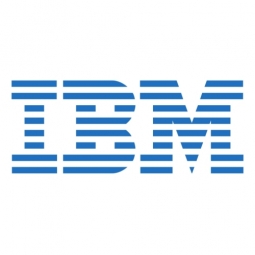
Supplier
IBM
IBM is an American multinational technology and consulting corporation that manufactures and markets computer hardware, middleware, and software, and offers infrastructure, hosting, and consulting services in areas ranging from mainframe computers to nanotechnology. IBM is intent on leading the development of a global data field.
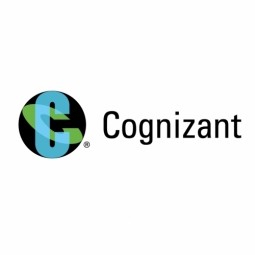
Supplier
Cognizant
Cognizant is a provider of information technology, consulting and business process services. Its customers are primarily corporations from the Forbes Global 2000, and it targets customers in the financial services, health care, manufacturing, retail, and logistics sectors. Year founded: 1988 Revenue: $14.8 billion (2017) NASDAQ:CTSH
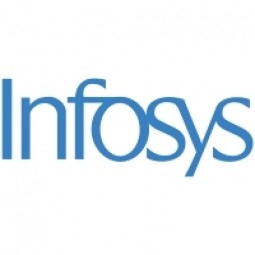
Supplier
Infosys
Infosys is a global leader in consulting, technology, and outsourcing and next-generation services. They help enterprises transform and thrive in a changing world through strategic consulting, operational leadership, and the co-creation of breakthrough solutions, including those in mobility, sustainability, big data, and Cloud Computing.
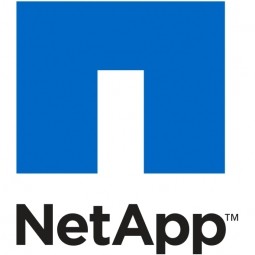
Supplier
NetApp
NetApp creates innovative storage and data management solutions that help accelerate business breakthroughs and deliver outstanding cost efficiency. Their dedication to principles of simplicity, innovation, and customer success has made us one of the fastest-growing storage and data management providers today.
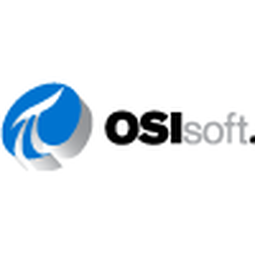
Supplier
OSIsoft
OSIsoft delivers the PI System, the industry standard in enterprise infrastructure, for management of real-time data and events. The PI System enables businesses to capture and leverage sensor-based data across the enterprise to improve efficiency, asset health, productivity, sustainability, quality, safety and security. Beyond being just a data historian, the open infrastructure connects data, operations and people to enable real-time operational intelligence and transform operations.





